MATTER: Castelli Alpha RoS 2 Jacket
I didn’t seriously think it wouldn’t rain. . . I just hoped.. It was 3 Celsius when I left home, half-anticipating a pleasant roll to Wakefield: 80km out-and-back. Podcast in my ear, I departed for 3.5 hours in fine rain. Not like: ‘This rain is fine!’ More like, ‘encompassing.’
Two hours in, the temperature has dropped to 1 and I’ve determined my ‘waterproof’ pants are not. Water is running down my knickers into my boots. Adding insult to injury, it’s soaking through the boots as well. My feet are soggy, frozen, painful, blockish.
My hands and upper body, however, are completely comfortable. I took a chance, only bringing my Castelli Espresso GT gloves along, which are tucked under my Alpha RoS 2 jacket’s cuffs. Water isn’t making it in, at all. My core, arms, and hands are warm, functional, safe. Meaning: I can steer, shift, and vitally, brake.
Yes, my feet are cold, quite, and it’s taking a lot of will not to let this bother me. But it is bothering me because I chose to ride out here, and I chose to put on what I put on. I don’t have to be out here riding; I do this because I want to. And I want to because I think I can do it, even on days like this, comfortably; the tools exist. It’s a matter of selecting and using them appropriately, which is, to be honest, part of the fun. It’s a game, a puzzle, a challenge. Not a question of if, but how. I’m annoyed because I erred, not because I’m playing the game.
It occurs to me that if I were to have a significant mechanical failure I’d be inclined to give up and call a friend. The thought brings insight: this is as grim as cycling conditions get, and I’m almost, nearly comfortable. My legs are wet but warm, it’s just my feet that are a gong-show. I nearly put the pieces together. So that’s where we’re at? Gloves and jacket are now fit-for-purpose, truly Rain or Shine, in the temperature range that has previously been nearly impossible to ride comfortably in? That is indeed where we’re at.
DRY-COLD vs WET-COLD
After two winters and many hours testing Castelli’s phenomenal Elemento winter jacket from -15 to +15 Celsius, I couldn’t have been keener to ride in their new ‘warmest’ model, the Alpha RoS 2, which retails for CAN $485. The Elemento was never intended to be a Rain or Shine (RoS) piece, but a ‘dry-cold’ jacket. This rendered the model somewhat ‘niche’, and, I would argue, ahead of its time. Castelli discontinued the model after 2019, which led to many riders scrambling to purchase them online before the supply dried up. I feel fortunate to have one! At the same time, the introduction of the Alpha RoS 2 lined up with a shift in use-case for riders like me, at a minimum, who would tend to spend fall training for and racing cyclocross. Through a ‘normal’ fall, I’d go out for an hour or two in cold, rainy conditions to train on my cyclocross bike. For that, I’d happily wear the Perfetto jacket, which is ideally suited to wet high-intensity riding. I wouldn’t go out and do a wet road ride at 3 Celsius. That’s precisely what I’ve been doing through fall. As I wrote this paragraph I was watching the forecast to time my departure for a 6-hour ride that began at 2C and involved rain.
Before, weekend winter rides would entail car-pooling to Wakefield, 40km from Ottawa, to ride a 60km snirt loop. In the COVID context, I’m leaning away from jumping into cars with friends and toward riding the additional 40km each way. This means I’m spanning more hours and a broader temperature range. As I write, I have weeks behind me where I needed a jacket to handle cold and rain between 0 C and 15 C. Now, as winter settles in for good, I need a jacket for the really windy days as an alternative to my Elemento (see the Dec 5 and 6 Strava files below). In addition, there’s a ‘wildcard variable’ in the equation: COVID restrictions preclude actually sitting inside cafes in Quebec, so stopping for a coffee entails standing or sitting outside. When it’s 4 C and you’re wet-but-warm, you might not want to stop for fear of getting cold. Let’s be serious, stopping for coffee and a treat is often the highlight of a long ride, and having to be prepared to ‘chill’ outside pushes moisture management to a new level of import. If the Elemento distinguished itself for its ability to maintain a dry upper-body during cold, dry winter rides, would the Alpha RoS 2 be able to do the same through cold, WET rides?
Beyond ‘Just get a good shell.’
Spoiler: YES, the Alpha RoS 2 delivers the new Gold Standard of performance in cold-wet conditions. If you’d like to skip all the context, my comments on the jacket’s features - Stated vs Experienced - can be found down below.
It’s important to establish that the Alpha RoS 2 is not a ‘shell’ jacket. ‘Shell’ jackets are essentially membranes to be worn over insulating layers in a modular manner, and they are a relatively ‘new’ development in the history of jacket design. The Alpha RoS 2 hearkens back to a simpler time, when ‘jackets’ were generally fairly breathable, insulated, wind and water resistant. You’d look out the window, assess the weather, maybe call the weather line for a forecast, and throw your jacket on. Maybe you’d wear a turtleneck instead of a t-shirt within if it was likely to be cold enough to say, ‘It’s cold today!’
As humans do, we’ve made things ever-more complicated and complex as we’ve adopted synthetic materials across all facets of wardrobing, which have delivered performance and comfort benefits that rival the best fibres nature has gifted us. Outdoor sportsfolk have transitioned from cotton, wool and silk to materials like polyester, polypropylene, lycra, spandex. These modern materials afford more sheer tailoring against the skin, increased mobility and durability, and funky funks that become impossible to wash away. But it’s worth it; bib-shorts made from synthetics don’t ‘edge out’ wool alternatives; they eclipse them. And let’s be honest, while #aerogains might not be everyone’s priority, it is hardly desirable to have clothing flapping around while battling the wind, no matter the context.
The transition to sheer, synthetic garments generated an increased demand for wind and water protection; two reasons (at least) underpin this demand. First, if we focus on cycling: aerodynamics. Synthetic garments allowed Castelli, for example, to create the first aerodynamic lycra bib-shorts in 1977, and the first aero jersey-bib combo for Team Saunier Duval in 2007. As this innovation slowly spread across the PRO peloton, and it sunk in that wrinkles wasted energy, riders continued to wear baggy shell rain jackets, very similar to those one would wear for camping, hiking, or waiting for a bus, in high-stakes races. Their bibs and jerseys were optimized for moving moisture away from the skin and allowing it to evaporate - for cooling - but the flip-side of this function was that they were freezing while wet and moving quickly through cold air. Wool in contrast, actually absorbs water into its fibre structure, away from the skin. That makes it heavier, and slower to dry, but also warmer while wet. Thus, tight-fitting garments that were not insulating required pretty ‘hardcore’ shells over them to block wind penetration entirely, and as much water as possible.
As the PRO peloton caught wind of Castelli’s revolutionary Nano Flex solution for jerseys and bibs, GORE-TEX produced numerous generations of textile to deliver wind and water resistance, while retaining as much breathability as possible. These were deployed in the form of shell jackets more than anything else. But anyone ‘in the know’ would tell you that these textiles have been pretty similar to garbage bags in actual use, and require a lot of know-how when worn across a broad range of intensities and conditions. For example, what happens when you ride up a mountain in the afternoon, in the sun. Then you descend as the sun drops. If you haven’t managed your moisture in the sun, you’re freezing as your shell flaps against you on the way down. If you have to stop for a flat…. Well, let’s hope your fingers are functioning.
GORE’s SHAKEDRY represents the pinnacle of their lightweight shell textile development, and it’s generally considered a phenomenal option. However, it is more of a ‘just in case’ piece than a dedicated item for daily or frequent use in cold conditions, wet or dry. This is why Castelli’s two Shakedry options (Idro PRO 2 and Idro 2) are clearly positioned as right-sized for packing into jersey pockets and ideally suited to volatile conditions and multi-day rides. They are also well-suited to folks riding up and down mountains, not least because the weather can change rapidly at altitude. If you click through the links, you’ll see these models come at a premium.
As I discuss in depth in my writing on Castelli’s Elemento, it’s something of a ‘Holy Grail’ in terms of effectiveness over hours of riding in the cold where stopping for various reasons is factored, planned or otherwise. The Elemento works exceptionally well in dry-cold conditions (BTW, dry air passes through fabric less easily than humid air; you need more wind protection for humid cold air). However, like perhaps every piece of quality cycling kit I can think of, there’s a learning curve associated with the Elemento, and it’s not ideally suited to fast descending in the cold (>50kph), because its permeability - which works well at cruising speed - can be overwhelmed. I found this would only occur 1-3 times during 3-4 hour winter rides I do (sometimes not at all), but my local terrain is rolling, not mountainous. For folks riding mountains, climbing temperature management would be easy to nail with a little practice, but descending would often be cold, at least on the arms.
This one goes to 11.
Castelli set out to build on their experience with the Elemento when designing the Alpha RoS 2, and the result is impressive. Priorities for the jacket centred on heat management across a broad range of conditions and rider intensities. The ‘RoS’ moniker indicates ‘Rain or Shine’, which I always find quite helpful for distinguishing the intended use for Casteiil pieces.
How does the Alpha RoS 2 step away from the ‘good shell’ approach, you’re wondering?
Windproof + Highly water resistant + Insulated + Breathable.
The devil is in the details, right‽ A garbage bag is wind and waterproof. A wool sweater underneath is warm. Poke some holes in strategic locations and the whole shebang is ‘breathable.’ There are metrics used to define each of these parameters, but that’s a rabbit hole I don’t want to go down. There is too much going on with the Alpha RoS 2’s design, materials, and construction to reduce its discussion to metrics that might be worth focusing on in the case of a shell. Instead, I will discuss the elements that comprise a system that is very effective in the use-range its intended to perform within.
At first glance
Given the weight and insulation of the Alpha RoS 2, it will be clear to most riders, right off the bat, that the jacket would be overkill for rain at 20C. Honestly, that’s a tricky temperature to even decide whether you want a jacket at all, but that’s a discussion for another day! This piece isn’t a rain jacket, and it’s likely heavy enough in the hands to make riders wonder when and why it’d be used.
Most riders will have experience dressing for wet weather in the 10-15C range; this is what some experience as ‘winter.’ Because these conditions occur all over the world,, there’s a broad demand for something like Castelli’s Perfetto, which isn’t insulated; it is indeed a popular piece. But below 10C is where things get ‘interesting,’ and a smaller subset of riders have experience with or desire to ride in this range. Having ridden bikes as my primary mode of transportation for nearly 30 years, figuring out how to deal with cold rain has been necessary for both commuting and sporting reasons, that latter being more complicated. Until the Alpha RoS 2 arrived, I’d never used a jacket I was completely happy with in the sporting context (cold-wet).
Clearly, below 0C we’re going to start dealing with snow, which is pretty easy for jackets to handle; it falls off. The Elemento can deal with that. But just above freezing through 10C is the gnarly range that is tough to get right with attire, especially when the temp fluctuates over hours, intensity swings around, and wind speeds range from mellow to brutal. All these swings can occur within one ride, which is why it’s vital (if you want to ride in the cold regularly), to manage moisture within your jacket well. And as I mention above, if you wish to pause for any reason, moisture management is yet more important. An additional factor some will be thinking about is multi-day riding and the need to dry out kit overnight. If your pieces are dry when you take them off you can stress about other things, like how many hours you’ll sleep before the fire dies down and you wake up cold.
So many words… Sorry/not-sorry. I’ve fielded many questions about the Elemento and Alpha RoS 2 via direct communications, so I’m trying to cover off the bases in one go.
Time to turn to the Alpha RoS 2 details, what’s going on with this piece that makes it so effective.
2-in-1
The Alpha RoS 2 is a 2-in-1 jacket in a couple ways. First, it has a dual application as a wet-cold and dry-cold piece. This is a departure from the Elemento, which is optimized as a dry-cold piece, minimally water resistant. The Alpha RoS 2 can do it all, which is part of why the Elemento isn’t in the line any more.
The second sense the jacket is 2-in-1 is quite literally at the core of its superior performance: on-the-fly insulation modulation. The insulated ‘vest’ portion of the jacket is first zipped up when donning the jacket. This zipper is suited to adjusting while on the bike with one hand, as it should be. The insulating fabric is textured to increase surface area for moisture transfer and air flow. The same insulating fabric is found within the arms, but not in the armpit areas.
The ingenious double-layer design deployed here works well for a few reasons. First, it’s simple. Meaning, there’s less ‘paralysis by analysis’ potential. All you need to do is choose your base layer/s and roll. The jacket is ‘forgivable’ if you overdo your layering, because you have two options to work with on the fly: 1) Open up the front of the jacket to some degree, venting the interior. The downside here is that you’ll create a bit of a parachute effect. 2) Open up the interior insulation to some degree. There’s no disadvantage here, unless you count two steps instead of one as such. If you’ve layered a little too heavily, or the conditions are just too warm for the jacket on the day, you can ride the whole time with the inner insulation ‘wide open’, while the exterior is closed. This feels perfectly comfortable, in my experience, and hasn’t led to any localized moisture accumulation.
Essentially wind-proof, highly water resistant
The Alpha RoS 2 isn’t built to be wind-proof from 360 degrees in a laboratory test. The jacket achieves what feels like - and is probably close to - complete and utter wind-proofness while riding. Castelli foregoes the GORE-TEX Infinium fabric everywhere on the jacket’s outer surface in favour or more appropriate and more breathable fabrics where the wind won’t reach. The front-side of the arms, front of the core, and back are all Infinium Windstopper, while the backs of the arms and sides of the trunk are a more conforming and breathable stretch fabric. Seam-sealing tape covers the shoulder seams, which see the highest water pressure while riding in the rain, while the other seams are not taped. This retains garment conformity (stretch), in contrast to what one would see in a waterproof jacket like Castelli’s Gavia.
To reiterate the use-case for the Alpha RoS 2, the jacket isn’t intended to be totally waterproof. The market and use-case for an insulated 100% waterproof jacket would be too narrow, I imagine, to develop such an option. Riders seldom take on 8-hour rides in the rain at 3C, while it wouldn’t be odd to do so at 18C. Water will leak into the Alpha RoS 2 eventually, but the ‘persistent beading’ of water off its Infinium surface performs admirably. In time, water will find its way through seams.
Wind, on the other hand, doesn’t get in. At least, I’ve yet to experience any wind penetration whatsoever after more than 40 hours riding in the jacket. Humid air doesn’t get through, nor does dry air. I love it.
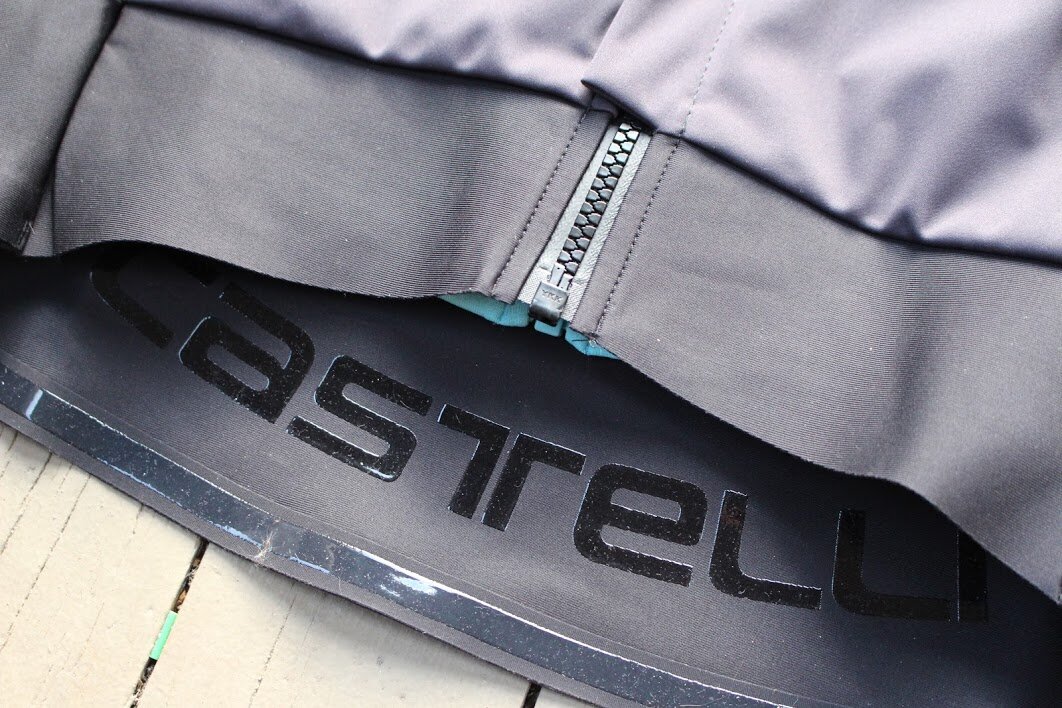
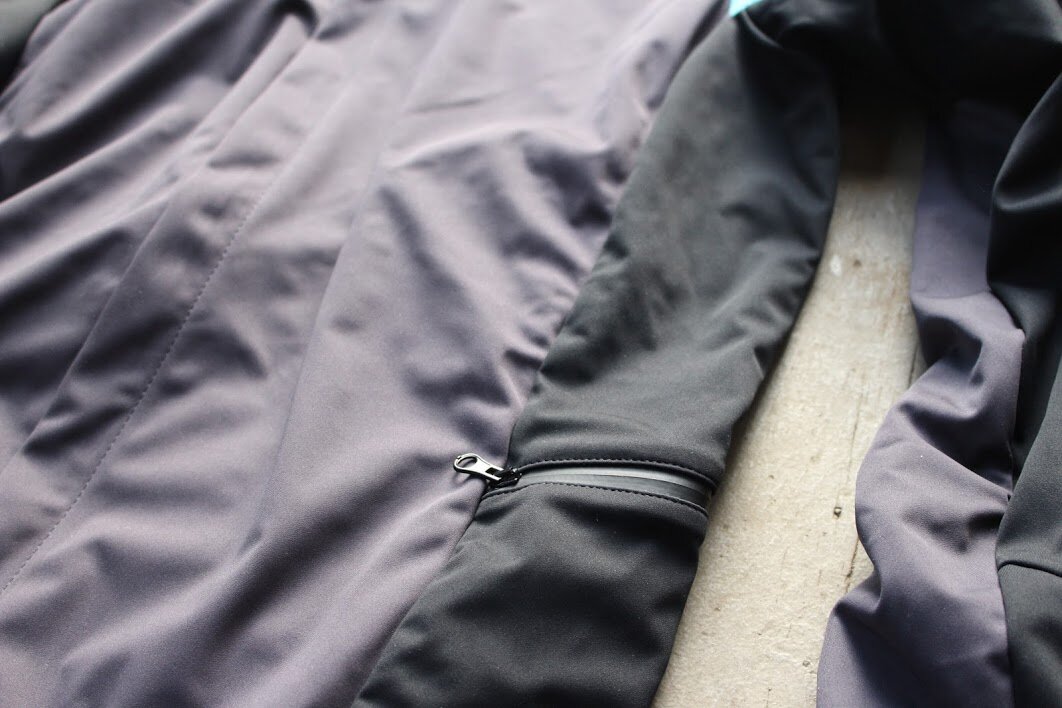
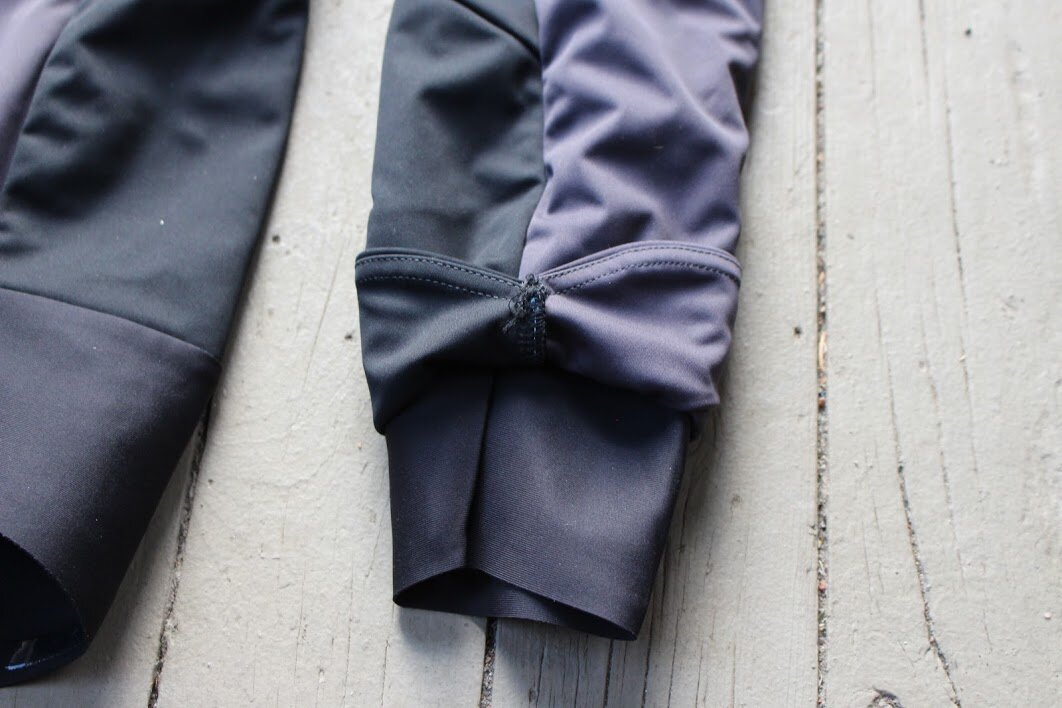
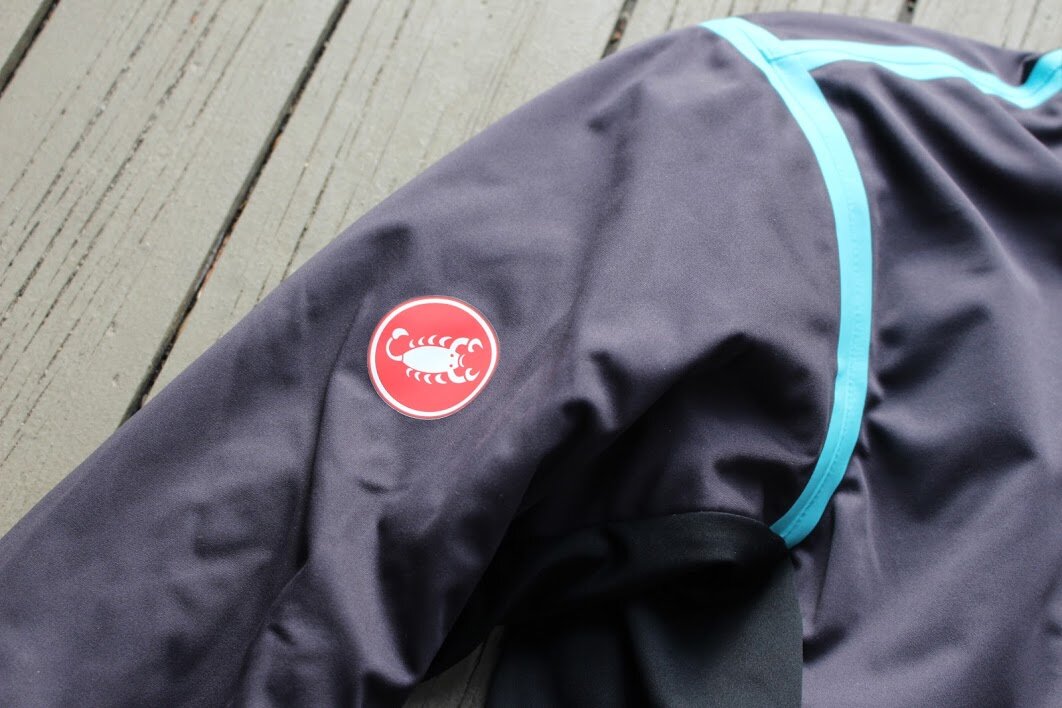
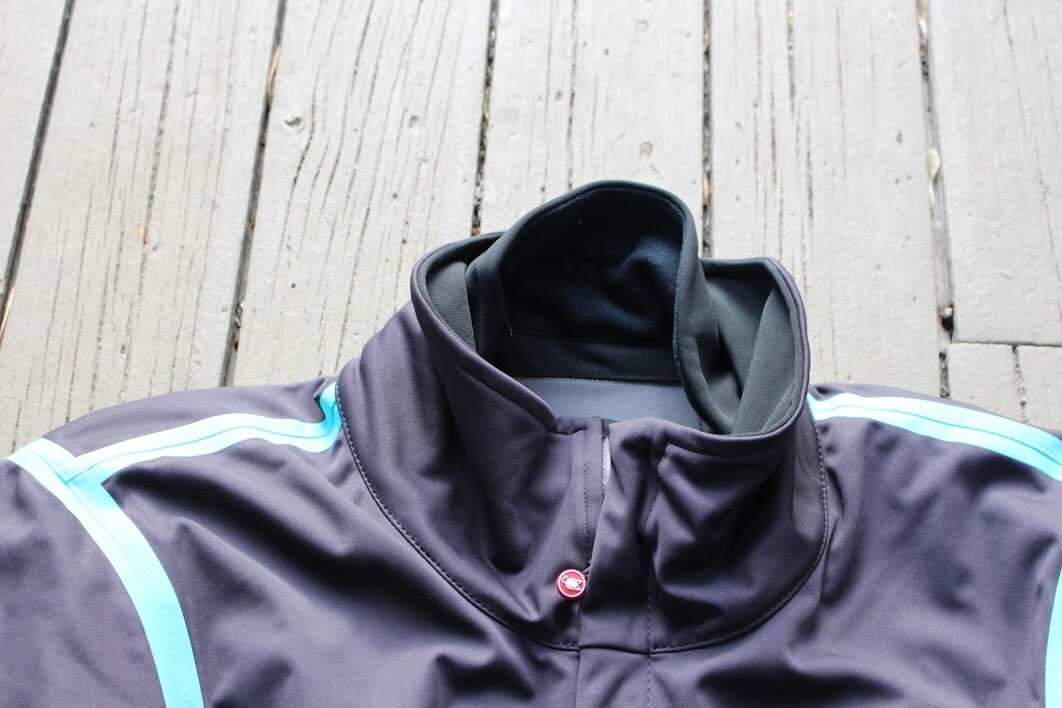
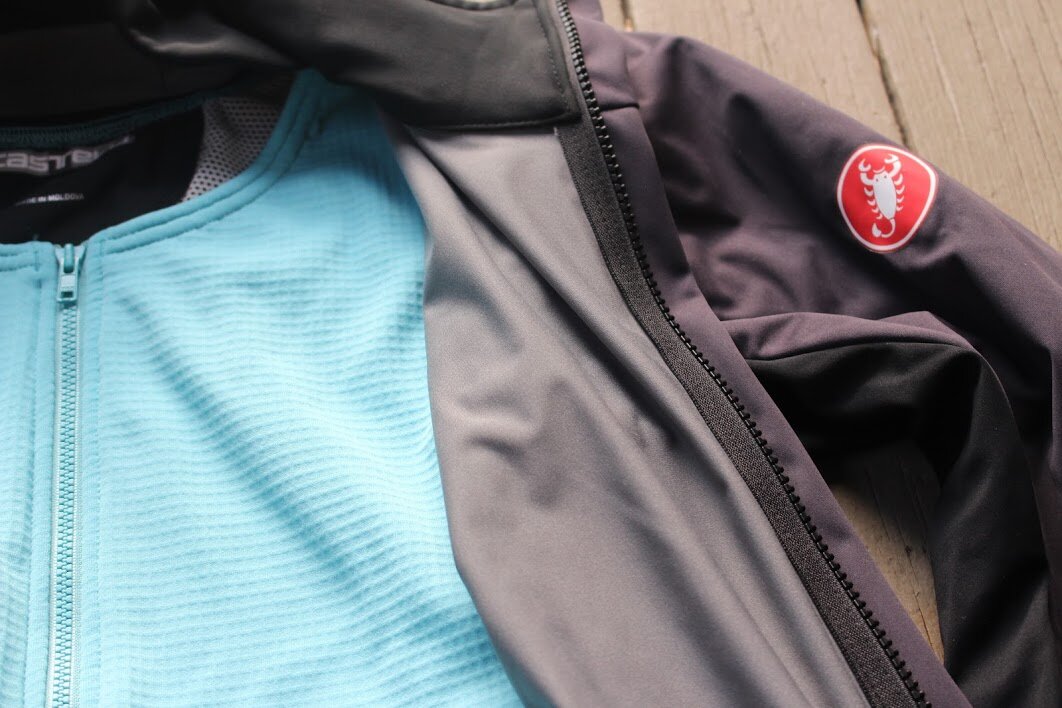
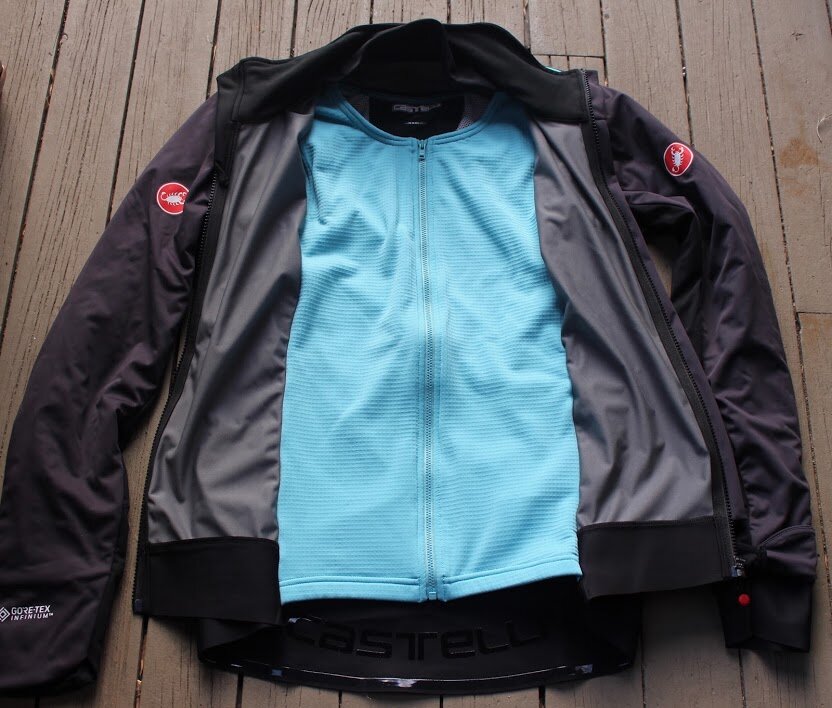
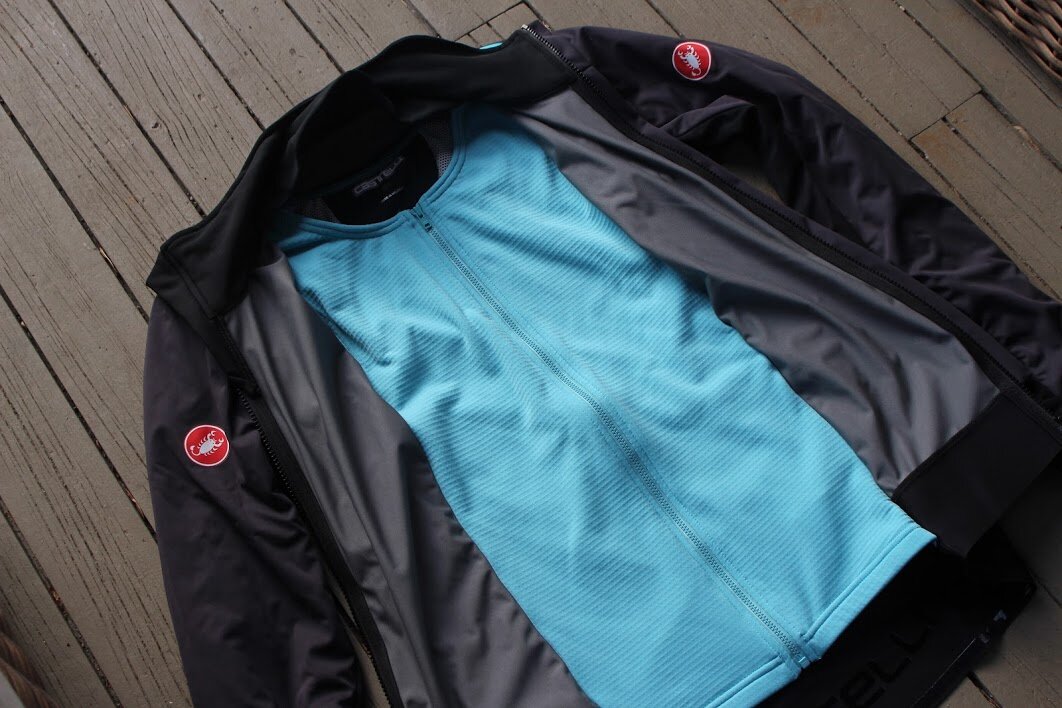
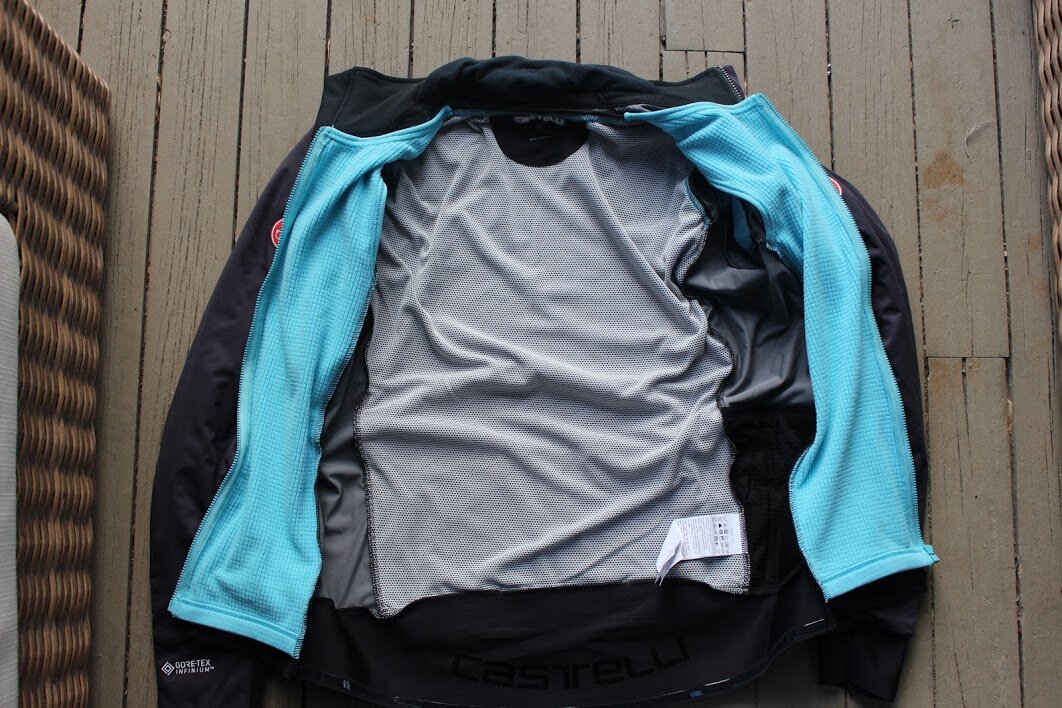

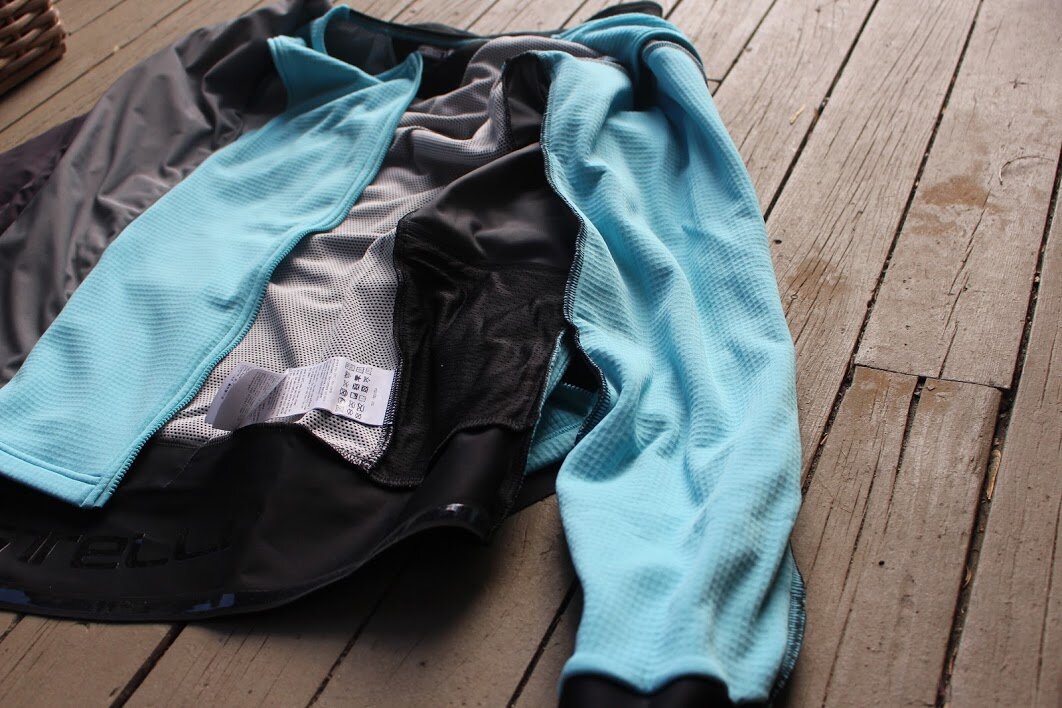
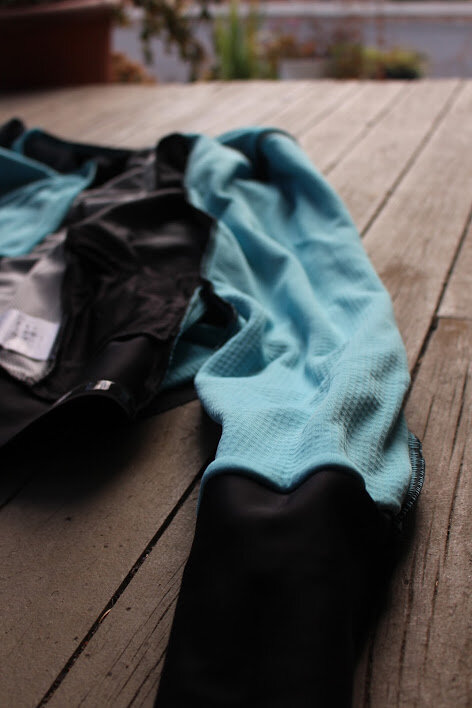
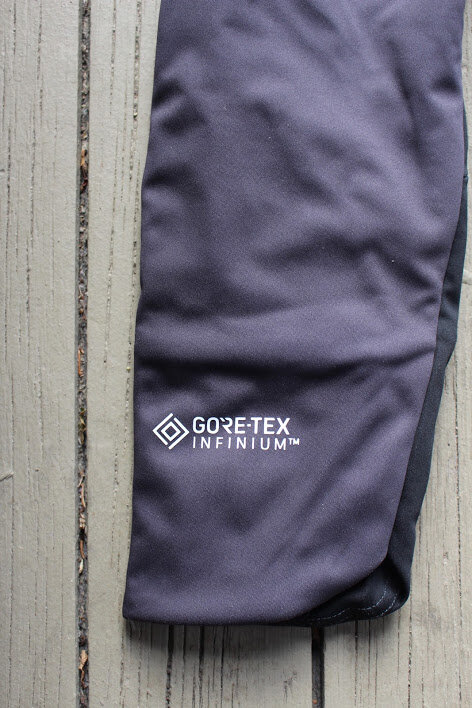

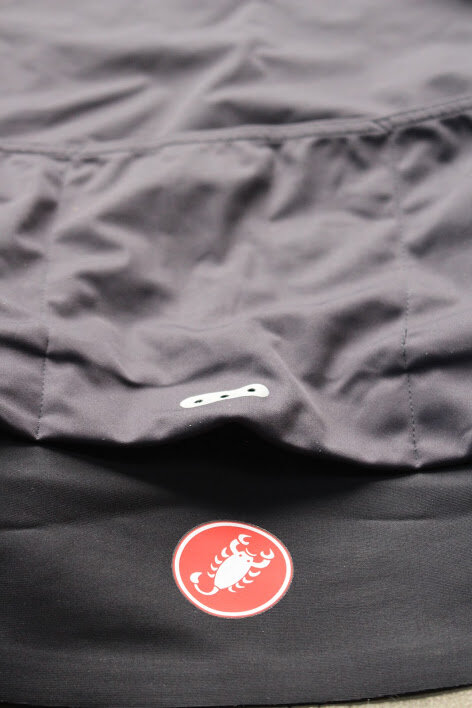
TECHNICAL FEATURES: STATED vs EXPERIENCED
The following are Castelli’s stated features and benefits for the Alpha RoS 2, and my evaluations of each.
Rain or Shine engineering makes this our best jacket ever for dry conditions while also providing significant rain protection
This is fair, given the additional wind protection offered over the Elemento (dry conditions), which will be key for folks riding fast descents. The jacket absolutely delivers significant rain protection.
GORE-TEX INFINIUM™ WINDSTOPPER® 150 fabric for wind protection with high breathability and effective rain protection
This claim is delivered upon to the greatest extend I’ve ever encountered.
Reduced seaming with seam sealing on shoulders reduces chances for water to enter through stitching
I’ve seen no water ingress while in the rain.
Double-layer Alpha construction separates insulating layer from wind/water barrier to let you better regulate ventilation
Absolutely true.
Water-resistant YKK® Vislon® zipper slides easily for better regulation of airflow
I’ve seen no water ingress here, and it’s easy to work both zippers with one hand while riding.Raw-edge waist with silicone gripper lies flat and seals out wind
True. The only mis-match I’ve experienced is with my Race Face pants that don’t hug my waist snugly (need to use a belt or suspenders), which leads to a gap between jacket hem and pants. The jacket is ‘just the right length’ for use with tights.
Double-layer cuff integrates with glove to prevent cold wind or water from entering at wrist
These are the best cuffs I’ve seen to-date. They can be run over or under glove cuffs, and integrate perfectly with Castelli’s warmest gloves - Espresso GT - and their more moderate Spettacolo. When the cuffs are over the cloves, water is channeled away. The internal cuff section is comfortable and effective.
Stretch fabrics with advanced patterning make for excellent close-to-body fit that still accommodates a wide range of body types
The jacket feels ‘off’ and ‘weird’ when standing around. This is mostly to do with its shaping in the armpit area. As soon as you get on a bike, it feels ‘normal’. This is down to excellent tailoring. If a jacket feels amazing while standing around, it probably won’t feel amazing in the riding posture. Regarding body types. a club-mate purchased a XXL, and his fit seems consistent with mine, despite our different builds.
The stretch fabric can only accommodate so much volume in the arms, so I advise you carefully select your size to accommodate the two heaviest base layers you ride in if you want to ride around or below -5C. You want to avoid tight fabric over the arms, which restricts blood flow, affecting hand warmth and dexterity. You’ll be colder if you overstuff the jacket than if you size and layer for a little wiggle room. A little goes a long way, just like with gloves and boots.
Back ventilation
A classic feature, works well to allow air to pass through over the shoulders and out the back, especially while venting with the outer zip open.
3 rear pockets with reflective laser-cut drain holes
Spacious pockets, just low enough for me to access. The stitching used to secure the pockets where they meet is minimal, and won’t hold up to heavy loading and accessing with bulky gloves. Take care here. I like to carry minimal items in my pockets in the winter, as warm gloves makes it hard to get in and out of them.
Zippered secure side pocket for valuables
This pocket is cool! It fits my little stack of bank cards perfectly, which is all I want to carry in such a pocket.
-5°-10 °C / 23°-50°F
I will end up pushing the jacket down to -15C without any anticipated issues; -5 seems conservative. 10C at the upper end is quite a realistic specification, though I’ve already work the jacket above that. Some folks care about being a little overdressed more than others.
As you can see in the ride data below, I’ve ridden the Alpha RoS 2 in gnarly, wet weather just above freezing through 13C, and dry weather down to -4C. On the coldest dry day, the jacket easily kept me warm. In practical terms, the jacket’s ability to perform down to and beyond -15C will hinge on how tightly it’s fitted, and how many base-layers are worn within. Mine will comfortably accommodate two base layers, which will certainly get me down to -15C. If I planned to ride in temps colder than that I’d size up.
Sizing / Fitting
There are a few principles worth considering when choosing your Alpha RoS size. First, aerodynamic optimization is not the objective. If you size the jacket for the tightest fit possible, you will restrict blood-flow in the arms, which will compromise warmth in your hands. This is not a '‘high-intensity’ garment; it’s not built for racing. It is meant for ‘typical’ winter riding, which is moderate in output, and will often involve stops along the way. In the context of fat-biking, it might involve overnight expeditions too, for example. If you are after a piece for cold-wet riding at high intensities and short durations, go for the Perfetto and layer as required.
As mentioned above, the Alpha feels odd while standing up off the bike. This tends to be a sign of a well-cut cycling jacket; it shouldn’t feel like it sits perfectly while upright. Once in the riding posture, everything should ‘fall into place’, with even tension across the garment’s panels. This is the case with the LARGE RoS 2 for me. Yes, I could fit a MEDIUM, as I don’t have a burly chest (I’m 6’1”, 177lbs, with a long torso). The hem would be a little short, positioning the pockets higher and harder to reach into. The forearms would be too tight. The same is true with the Elemento, which is why I upped my size there from MEDIUM to LARGE after riding in the former for a while.
Key areas to pay attention to when sizing your Alpha are the two above, along with neck size. Try the jacket on with the neck gator you will ride with, and ensure you have room to close the zipper comfortably. You’ll want to know if that’s too tight, and decide whether you’re ok with having the zip not full closed if it’s a little too snug.
I’d suggest planning to wear up to two base-layers under the jacket down to around -5 C. The thickets combo I can wear comfortably in mine is a fishnet Brynje polypropylene long-sleeve base-layer with a 260g Ibex merino LS base-layer over it. That adds up to perhaps 3mm in thickness, which is about as tight as I want my forearms to be. I prefer using the Castelli Prosecco Tech LS base-layer as my sole or second layer, as it’s a little thinner, and woven to reduce thickness in areas my bib-tights overlap (genius!).
Final Thoughts
If you read questions and comments folks are posting to FaceBook cycling groups these days, you’ll notice two trends. First, there are countless people who’ve jumped into cycling since COVID took hold of the world, and they are turning to communities of interest for advice about everything under the sun, from where to ride to what to ride on and in. Second, it’s more clear than ever that cycling is pretty complicated to get into without any prior background in the sport. While its common for folks to provide advice that is ‘accessible,’ the fact is that “it depends” is usually how most responses should begin. But that leads to long answers, and folks generally prefer to say things like, “I use this, it’s the best, you should use it.”
In September, a local rider posted a call for recommendations on MTB tires to a FB group. The framing of the call was generic, and didn’t provide enough context and/or information about priorities to elicit responses that were likely to actually prove helpful. The thing is, ‘it’s complicated,’ and tire conversations are better had while riding together than over the internet. That particular situation, led me to realize that constraints are helpful in many ways, including when riders have already identified their priorities. In the case of tires, I wound up suggesting constraining the decision-making process to one ‘closed system.’ By this, I meant, choose a tire manufacturer you like/trust/respect/have faith in. Each big tire manufacturer makes tires for a huge spectrum of riding conditions and styles, and their sponsored athletes have to choose from their line for races all over the world. The idea is you choose the brand, then proceed to understand their range, and focus your energy on making the best choices on tires to cover your riding in a given year within the bounds of their line. This includes choosing between tire compounds, which really requires testing to learn. Ultimately, the outcome is that the rider learns to ‘ride to the tires’, because they’ve come to understand what trade-offs they are making, and why. The objective should NOT be to land on tires that will awesome every moment of every ride; there’s no one tire that is going to be able to do that, unless a rider only rides an extremely narrow band of terrain and conditions. The objective should be to make informed decisions, versus falling into paralysis by analysis. If we’re patient and conscientious as we go through this process, we learn how to capitalize on our tires’ strengths and manage their weaknesses.
I apply this ‘philosophy’ to how I collaborate with Castelli and all the other folks behind the brands you see me riding and writing about. When I initially reached out to Castelli I couldn’t grasp their whole line. It was immense, complicated, and dense. Dense, meaning there was a whole lot of substance embedded within each piece, a story behind everything, because they invent innovative products, rather than merely assemble.
Castelli is thus the ‘closed system’ I’m working to learn, to understand, and to communicate. I have the utmost respect for what they contribute to the world of cycling, and I’m motivated to bring others along with me as I build experience and understanding of what works for which conditions, and how. I provide detailed feedback to Castelli on the performance of the pieces I use, and contribute what I can to the design spiral.
I hope this helps you, dear reader, understand what I’m doing with Castelli. I’m not trying to convince anyone that Castelli is the only brand they should consider. What I am trying to do is help riders make informed decisions about which pieces might meet their requirements and expectations, and how to get the most out of their options, as a system. And I hope it’s becoming clear that cycling clothing isn’t as unlike tires as one might think at first blush. There is a learning curve to the incorporation of every type of kit you might wear. There are socks that have to be put on in a particular way (compression variants), bibs and tights have to be placed carefully to position their pads correctly, aero jerseys need to have their sleeves placed properly. . . ; these are summer pieces, and they require experience to get right.
Foul-weather and winter kit is next-level when it comes to the details of fit and ‘operation.’ It takes time to learn each piece, and figure out how to get the most from it. Again, it’s a process, and if you don’t have regular opportunity to ride in harsh conditions it can be hard to remember what you’ve done that worked, and what you’ve done that didn’t. I take detailed kit performance notes on all of my winter rides, which functions as a feedback for Castelli, me, and you. This is all ‘open-source,’ meant to help those folks get a sense of how the various factors at play interact, and see which pieces do what. I have a deep respect for the work Castelli puts into their line, and I’ve taken on the task of learning how it functions as a system, where the rider and kit form a dynamic.
Please don’t hesitate to ask questions! Every rider is unique, so what works for me won’t necessarily work the same for you, but there are principles and methods here - and in my other writing - that underpin an adaptive, systems-thinking approach to riding outside in harsh conditions. Winter riding can be absolutely beautiful, but it’s never going to be easy. But it does get easier!














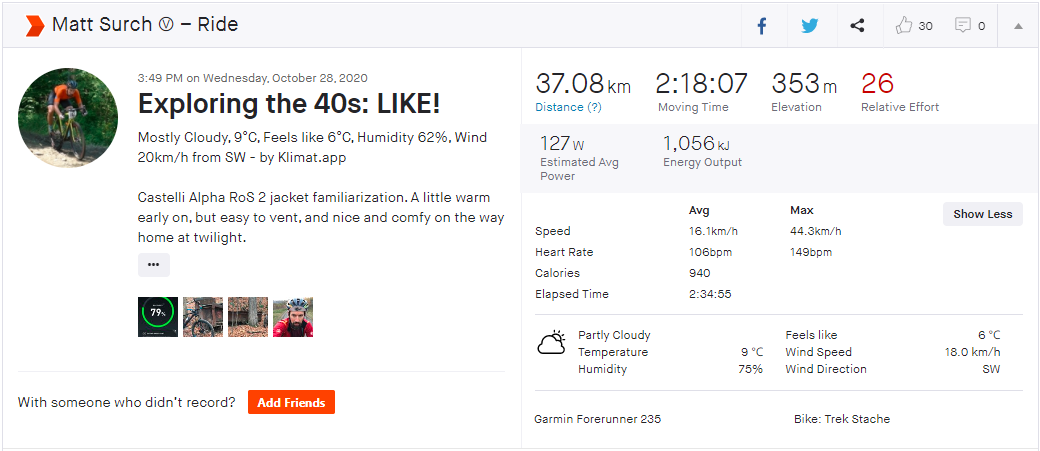


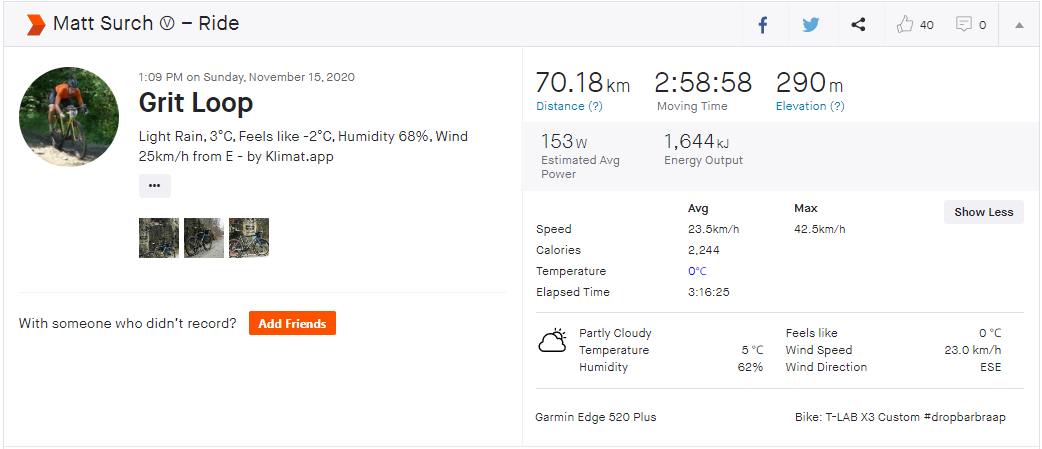

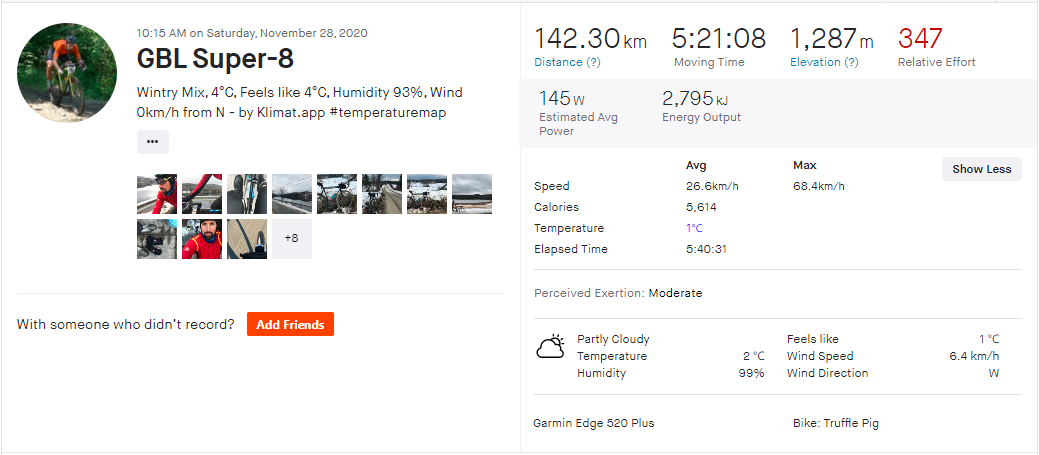
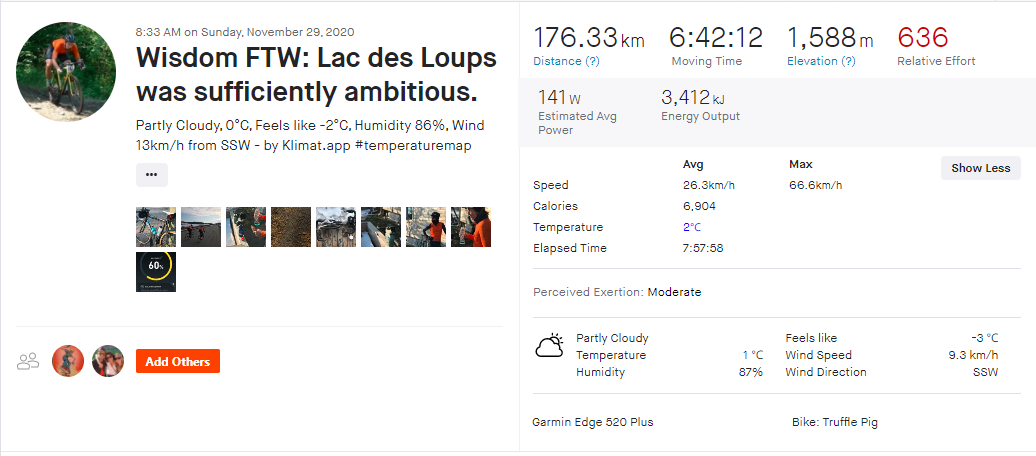
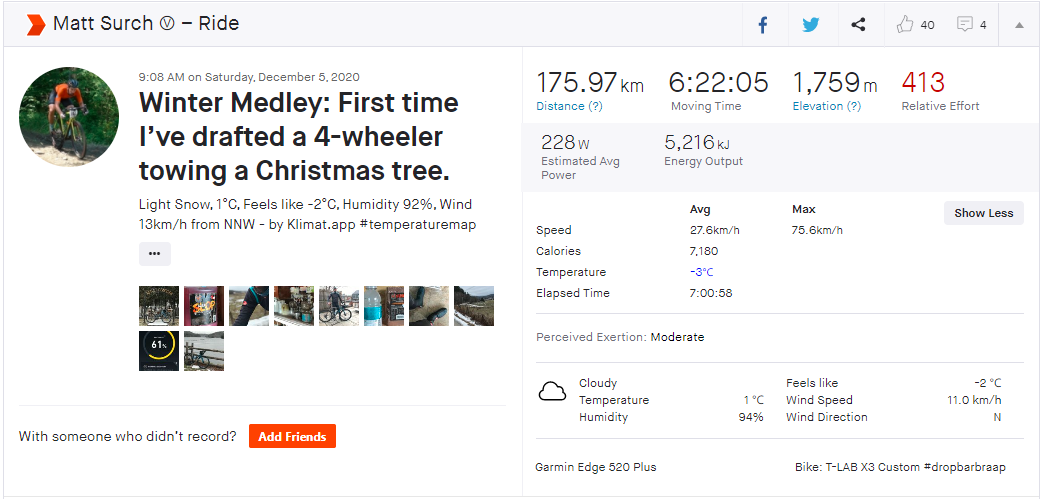
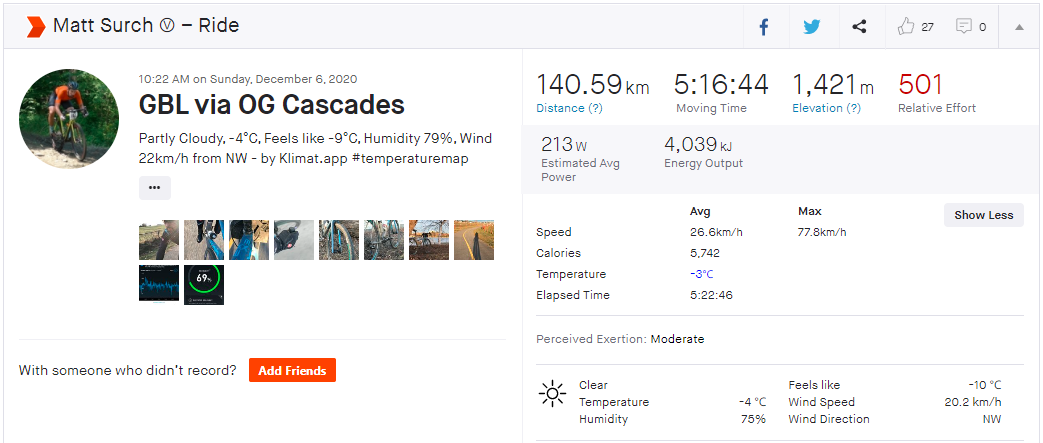









Read, listen, or both. I sat down with Castelli to talk about getting the most from their line of cold weather clothing, which dipped into general principles, and numerous tips and tricks riders can use to steepen the learning curve and create great winter cycling experiences. The blog post elaborates on numerous threads within the podcast, and functions as a complementary resource.